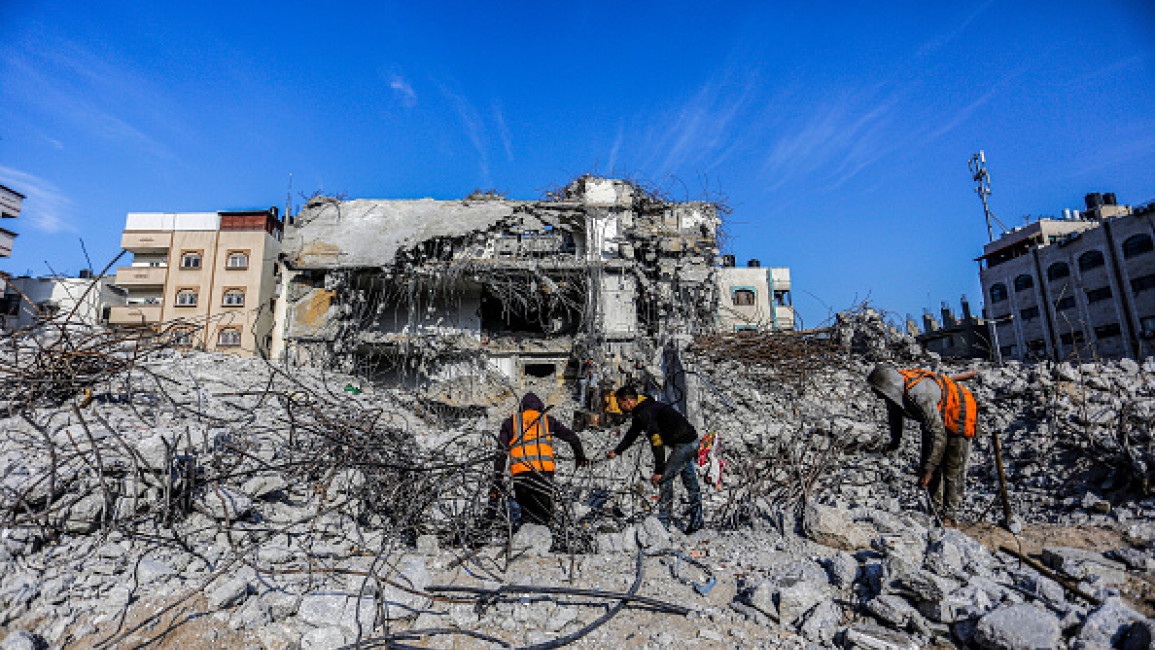The devastation in Gaza extends beyond just concrete and cement buildings. According to "Yara Sharif," a Palestinian architect based in London, speaking with NPR, the impact of the Gaza war has not only affected residential structures, schools, and hospitals but has also led to the destruction of numerous historical buildings.
ALWAGHT- Despite the current mourning and humanitarian crisis in Gaza due to nearly four months of war and bombardment by the Zionist regime, the aftermath of the Gaza war remains the primary concern. Over 25,000 individuals lost their lives in the war against Gaza, and more than 1.9 million people have been displaced from their homes. The United Nations reports that 85% of Gaza's population are internally displaced, struggling with acute shortages of food, clean water, and medicine, with lives hanging in the balance. Furthermore, 60% of Gaza's infrastructure has suffered severe damage or complete destruction. Reports suggest that over half a million people in Gaza face daily hunger, with less than one meal a day for 9 out of 10 Palestinians, and lack access to clean, drinkable water.
The extent of Gaza's destruction in statistical terms
According to official reports, the continuous assaults by the Zionist occupiers in the Gaza Strip are causing infrastructure and vital services to deteriorate with each passing day. As per the report from the Palestinian Government Media Office in Gaza dated December 3, approximately two months ago, nearly 65,000 residential units in Gaza have either been destroyed or made uninhabitable, while an additional 280,000 units have suffered severe damage. It's highly probable that the extent of destruction has increased significantly this month alone. Currently, Gaza has only 9 functioning hospitals with limited capacity, while 21 other hospitals have been entirely incapacitated due to bombardments.
How should Gaza be rebuilt?
The devastation in Gaza extends beyond concrete and cement structures alone. "Yara Sharif," a Palestinian architect based in London, shared in a conversation with NPR, that as a consequence of the Gaza war, not only residential buildings, schools, and hospitals have suffered destruction, but also numerous historical landmarks. According to Sharif, the conflict in Gaza has resulted in the disappearance of specific social and cultural customs within historic neighborhoods. The way of life under traditional roofs, the bamboo hut culture for which Gaza was renowned, and the vibrant traditional markets along the Gaza coast featuring corn and barbecue, represent significant losses. It may even be necessary to memorialize these lost spaces since they may never be seen again. Moreover, any reconstruction efforts in Gaza should be led by its people, rooted in Palestinian culture and identity.
Other experts echo Sharif's sentiment, emphasizing that Gaza's reconstruction should not be imposed from above with predetermined plans. Instead, reconstruction should be a grassroots effort driven by the residents of Gaza.
How much money is needed?
The chief of the Palestinian Investment Fund has highlighted the financial aspect of Gaza's reconstruction, indicating that a minimum of $15 billion is required to rebuild homes in the region. According to "Mohammad Mustafa," recent international reports suggest that 350,000 residential units in Gaza have incurred full or partial damage. Assuming that 150,000 housing units need reconstruction, with an average cost of $100,000 each, the estimated minimum cost for reconstructing residential units in Gaza is $15 billion.
An opportunity for interventionism
It appears that the rebuilding of Gaza has now become an opportunity for manipulation and interference by certain nations. Some countries, such as the United Arab Emirates, declare millions of dollars in aid for Gaza's reconstruction. Nevertheless, the crucial question at hand is whether the reconstruction of Gaza should be externally dictated.
Certainly, the response to this inquiry is negative, as emphasized by numerous experts. They assert that any rebuilding efforts in Gaza should be internally managed by Palestinians residing in the territory. Even proposals put forth by certain Western nations like Germany for Gaza's reconstruction, based on the Berlin Plan, imply a division of Gaza. These proposals, predominantly advocated by Western and European countries, receive approval in Tel Aviv before Gaza, a process deemed unjust as Gaza's reconstruction is essentially led by Israeli occupiers and aggressors.
Therefore, it appears that the best approach to Gaza's reconstruction is to allocate financial resources and funds needed to Palestinian institutions in Gaza so that Palestinians can lead the reconstruction efforts based on their understanding of the conditions and needs of Gaza.



























